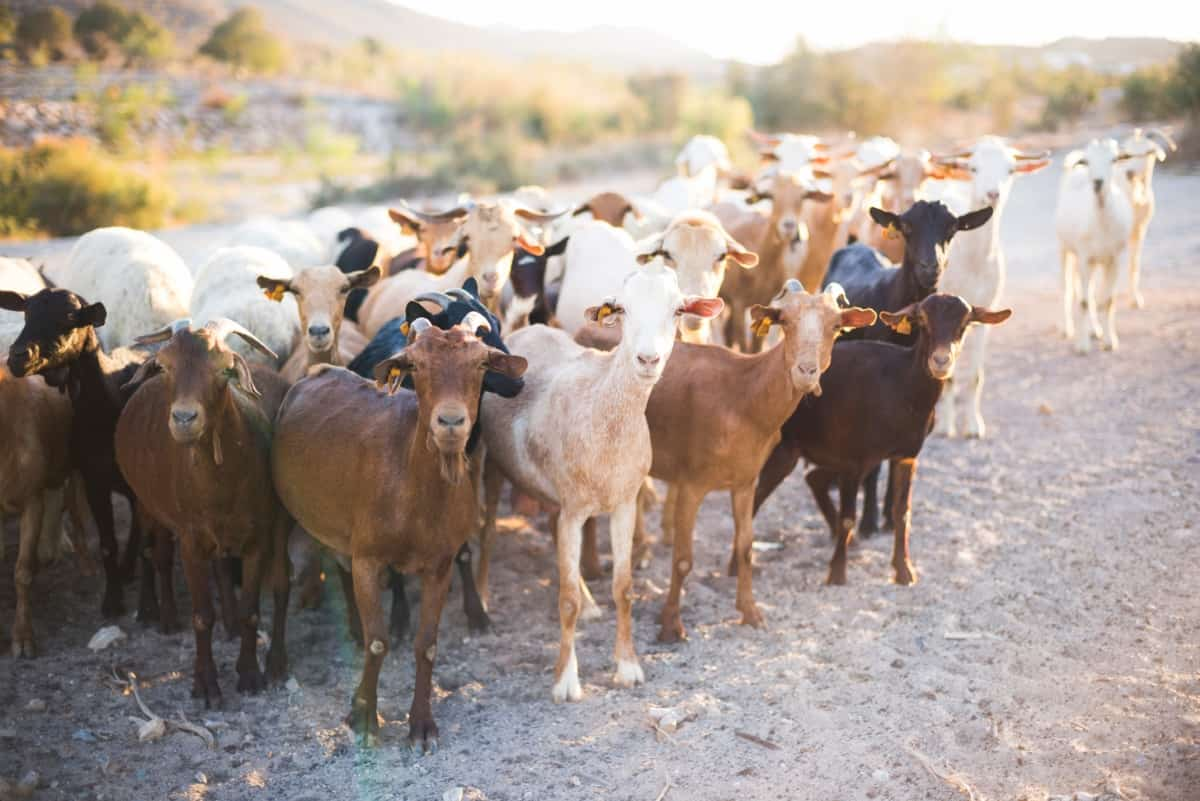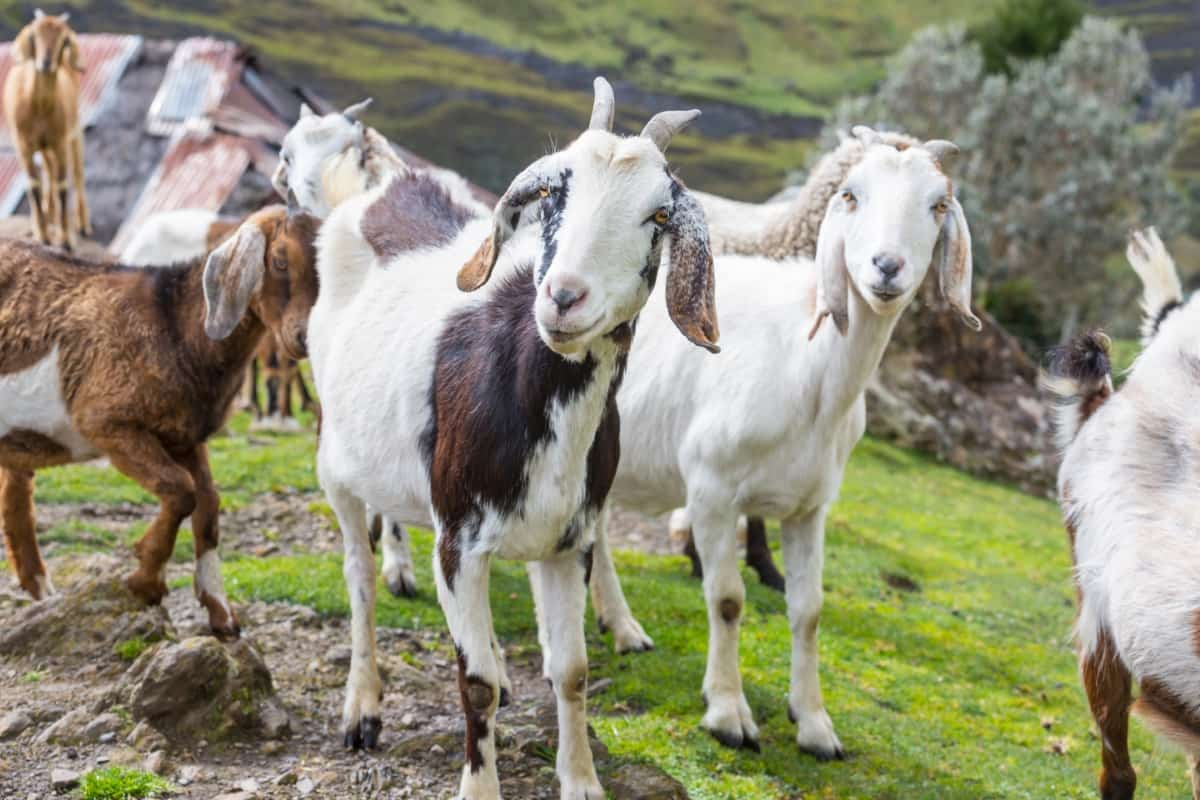Goat farming in India presents a promising opportunity for agricultural entrepreneurs, combining the demands of a growing market with the potential for substantial profit. This analysis explores the costs and profitability of raising 10, 20, 50, 100, and 500 goats for meat, providing valuable insights for prospective and existing farmers.

Meat Goat Farm Project Report
Basics of Goat Farming Business
Goat farming is an increasingly popular agricultural business, offering a lucrative opportunity for farmers. This article delves into various aspects of goat farming, particularly focusing on different scales such as NABARD goat farming project report, goat farming project report for 200 goats, goat farm project report for 100 goats, and 50 goat farming project report.
Goat farming is a versatile venture, adaptable to various environments and capable of yielding significant returns. It’s essential to understand the basics, including breed selection, feeding, health management, marketing, financial planning, and legal considerations. The success of a goat farming project, be it 100 goat farming project cost or smaller scales, hinges on a well-structured plan and efficient management practices.
Essential Equipment and Infrastructure for Goat Farming Business
For a successful goat farming business, appropriate infrastructure and equipment are crucial. Housing should ensure comfort, safety, and ease of management, accommodating the number of goats planned, whether 10, 20, 50, 100, or 200. Essential equipment includes feeding troughs, water containers, and health management tools. Fencing is important for security and controlled grazing.
Storage facilities for feed and equipment and proper waste management systems are essential. The design should consider space for breeding, kidding, and isolation in case of illnesses. Investments in infrastructure are vital in determining the overall project cost and efficiency.
Right Breeds for Your Goat Farming Business
Selecting the right breed is a pivotal decision in a goat farming project. The choice depends on your farming goals: meat, milk, or fiber production. Popular meat breeds include Boer, Sirohi, and Osmanabadi, known for their fast growth and high-quality meat. Dairy breeds like Saanen and Alpine are preferable for milk production. Your choice should align with local climatic conditions, market demand, and resource availability. Proper breed selection significantly impacts the productivity and profitability of your venture, whether it’s a goat farming project report for 200 goats or a smaller setup.
Nutritional Requirements and Feeding Practices in Goat Farming
Goats require a mix of forage, grains, minerals, and clean water. Forage, including grass, leaves, and hay, should form the bulk of their diet. Supplemental grains can enhance growth and milk production. Mineral supplements are necessary to prevent deficiencies. Having clean water regularly is really important for their good health. Adapting feeding practices to the specific needs of your herd, whether in a 100-goat farming project cost or a smaller or larger scale project, is key to maximizing efficiency and output.
In case you missed it: The Goat Fattening Process: Methods, Feed Formula, and Cost

Health Management and Disease Control in Goat Farming Business
Effective health management is crucial for the success of any goat farming project. Regular vaccinations, deworming, and health check-ups are essential to prevent diseases and maintain a healthy herd. Early detection and treatment of illnesses reduce the risk of widespread infections. A good health management plan includes routine monitoring of goat health, maintaining hygiene in living spaces, and stress reduction.
Having a veterinarian on call for emergencies and routine health assessments is important. Implementing these practices is vital for the well-being of the goats, impacting the farm’s overall success, be it a 50-goat farming project report or a larger scale.
Marketing and Selling Your Goat Farm Products
Marketing and selling are critical aspects of the goat farming business. Understanding market demand and establishing a strong network are key. Products can include meat, milk, and fiber, depending on your farm’s focus. Direct selling to consumers, local markets, restaurants, and butcheries are common channels.
Online marketing and community engagement can also help in reaching a wider audience. Developing a brand and maintaining quality is important for customer retention and business growth. Effective marketing strategies increase profitability, whether a goat farming project report for 200 goats or a smaller-scale operation.
Financial Planning and Management in Goat Farming Business
Financial planning and management are vital in goat farming. This includes budgeting for initial setup costs, ongoing expenses, and emergency funds. Monitoring expenses and income helps in making informed decisions. Applying for loans or grants, like the Nabard goat farming project report, can provide financial support.
Keeping detailed financial records aids in assessing the business’s performance and planning for future expansion or improvements. Good financial management is essential for sustainability and growth, whether in a goat farm project report for 100 goats or a larger or smaller venture.
Regulations and Legal Considerations for Operating a Goat Farming Business
Adhering to regulations and legal requirements is essential for a goat farming business. This includes obtaining necessary permits and licenses. Understanding and complying with local, state, and national laws regarding animal welfare, environmental protection, and business operations is crucial.
In case you missed it: Sheep Farming Vs Goat Farming: Pros, Cons, and Which is More Profitable?

Regularly updating yourself on legal changes helps in maintaining compliance. It’s also important to have insurance for liability and asset protection. Meeting these legal obligations ensures a smooth operation and safeguards against potential legal issues in your goat farming venture.
Meat Goat Farm Project Report for 10, 20, 50, 100, and 200 Goats
For 10 Goats
Purchasing Costs for total 10 goats: 10 goats x ₹4,000 per goat = ₹40,000
Feeding Costs (Annual)
- Hay: 10 goats x 2 kg/day x 30 days/month x 12 months x ₹20/kg = ₹14,400
- Grains: 10 goats x 1 kg/day x 30 days/month x 12 months x ₹50/kg = ₹18,000
- Vegetables: 10 goats x 1 kg/day x 30 days/month x 12 months x ₹25/kg = ₹9,000
- Total Feeding Cost: ₹14,400 + ₹18,000 + ₹9,000 = ₹41,400
Veterinary Expenses (Annual)
- Vaccinations: 10 goats x 2 vaccinations/year x ₹100/vaccination = ₹2,000
- Deworming: 10 goats x 2 deworming sessions/year x ₹50/session = ₹1,000
- Medical Care: 10 goats x ₹200/visit = ₹2,000 (assuming one visit per goat per year)
- Total veterinary expenses: ₹2,000 + ₹1,000 + ₹2,000 = ₹5,000
Sale Price of Meat for total10 goats: 10 goats x 25 kg/goat x ₹600/kg = ₹150,000
Profitability Calculation
- Total Costs: Purchasing + Feeding + Veterinary = ₹40,000 + ₹41,400 + ₹5,000 = ₹86,400
- Profit: Sale Price – Total Costs = ₹150,000 – ₹86,400 = ₹63,600 (approximately $800 USD)
For 20 Goats
- Purchasing Costs: 20 goats x ₹4,000 = ₹80,000
- Feeding Costs: (Hay + Grains + Vegetables) x 2 = ₹41,400 x 2 = ₹82,800 per year
- Veterinary Expenses: (Vaccinations + Deworming + Medical care) x 2 = ₹500 x 2 = ₹1,000 per year
- Sale Price of Meat: 20 goats x 25 kg x ₹600 = ₹300,000
- Profit: ₹300,000 – (₹80,000 + ₹82,800 + ₹1,000) = ₹136,200 (approximately $1700 USD)
For 50 Goats
- Purchasing Costs: 50 goats x ₹4,000 = ₹200,000
- Feeding Costs: (Hay + Grains + Vegetables) x 5 = ₹41,400 x 5 = ₹207,000 per year
- Veterinary Expenses: (Vaccinations + Deworming + Medical care) x 5 = ₹500 x 5 = ₹2,500 per year
- Sale Price of Meat: 50 goats x 25 kg x ₹600 = ₹750,000
- Profit: ₹750,000 – (₹200,000 + ₹207,000 + ₹2,500) = ₹340,500 (approximately $4250 USD)
For 100 Goats
- Purchasing Costs: 100 goats x ₹4,000 = ₹400,000
- Feeding Costs: (Hay + Grains + Vegetables) x 10 = ₹41,400 x 10 = ₹414,000 per year
- Veterinary Expenses: (Vaccinations + Deworming + Medical care) x 10 = ₹500 x 10 = ₹5,000 per year
- Sale Price of Meat: 100 goats x 25 kg x ₹600 = ₹1,500,000
- Profit: ₹1,500,000 – (₹400,000 + ₹414,000 + ₹5,000) = ₹681,000 (approximately $8500 USD)
For 500 Goats
- Purchasing Costs: 500 goats x ₹4,000 = ₹2,000,000
- Feeding Costs: (Hay + Grains + Vegetables) x 50 = ₹41,400 x 50 = ₹2,070,000 per year
- Veterinary Expenses: (Vaccinations + Deworming + Medical care) x 50 = ₹500 x 50 = ₹25,000 per year
- Sale Price of Meat: 500 goats x 25 kg x ₹600 = ₹7,500,000
- Profit: ₹7,500,000 – (₹2,000,000 + ₹2,070,000 + ₹25,000) = ₹3,405,000 (approximately $42500 USD)
In case you missed it: Goat Breeding Calendar: Goat Gestation Stages and Goat Gestation Table

Conclusion
Raising goats for meat in India can be profitable, with calculated profits ranging from ₹63,600 for ten goats to ₹3,405,000 for 500 goats, highlighting the potential for significant financial returns with proper management and market strategies. This scalability and profitability make goat farming an attractive option for farmers looking to diversify and expand their agricultural activities.
- Ultimate Guide to Ossabaw Island Hog: Breeding, Raising, Diet, and Care
- Ultimate Guide to Juliana Pig: Raising Facts, Size, Diet, Care, and Lifespan
- Raising Lleyn Sheep: Disadvantages, Price, Uses, Characteristics, and Care
- Ultimate Guide to Meishan Pig: Breed Facts, Breeding, Raising, and Care
- Ultimate Guide to Teacup Pigs: Raising, Diet, Lifespan, Cost, and Care
- Guide to Raising Poll Dorset Sheep: Facts, Profile, Characteristics, Uses, and Care
- Ultimate Guide to Bighorn Sheep: Characteristics, Diet, Lifespan, Breeding, and Lifecycle
- Ultimate Guide to Raising Katahdin Sheep: Farming Facts, Breed Profile, Uses, and Care
- Ultimate Guide to Raising Oreo Cows: Belted Galloways Farming Facts, Profile, Uses, and Care